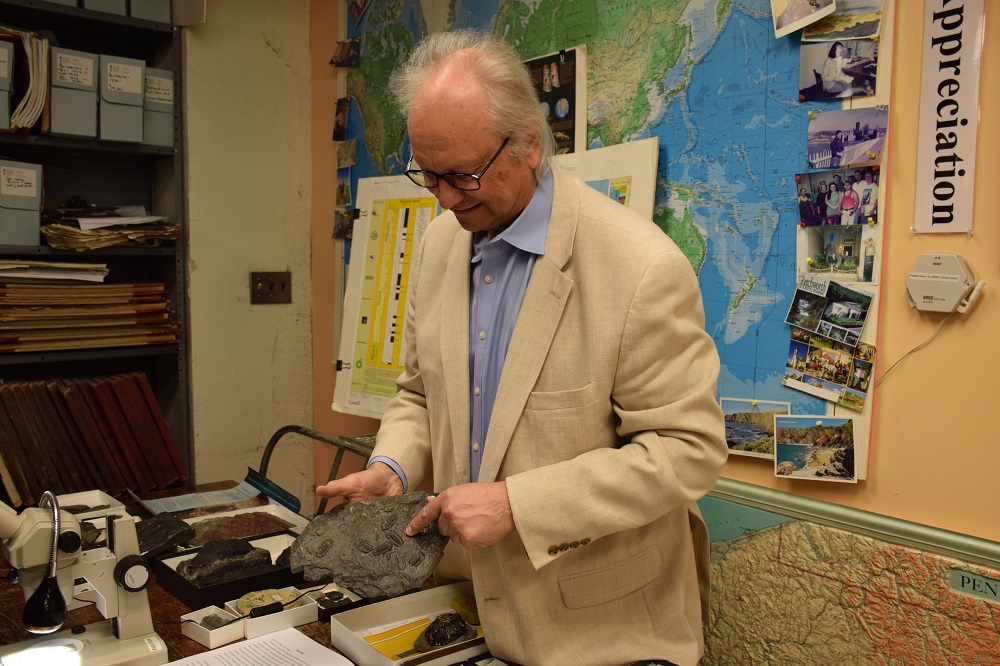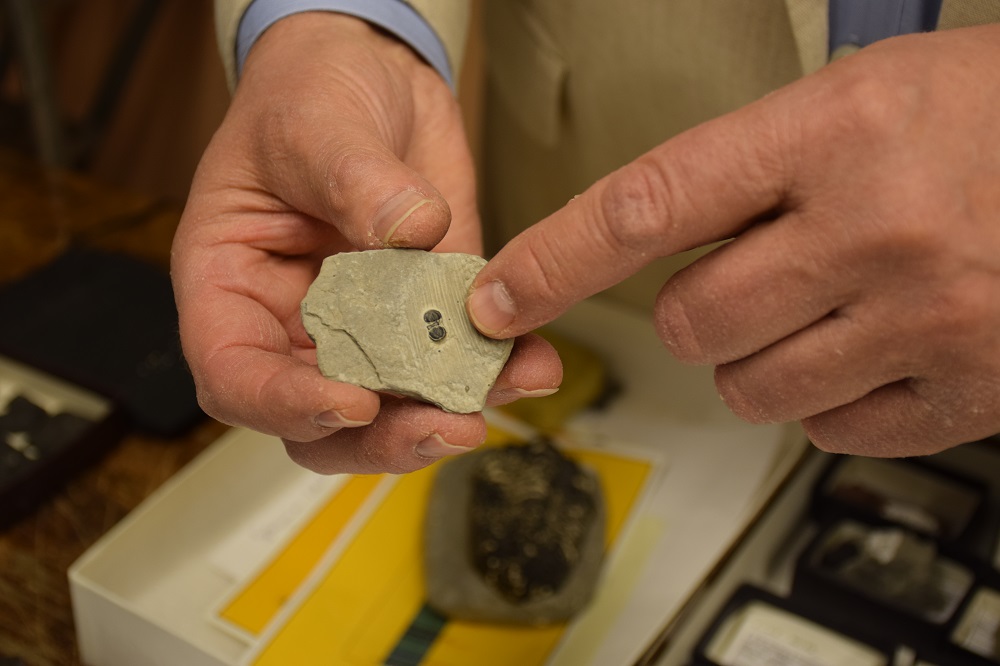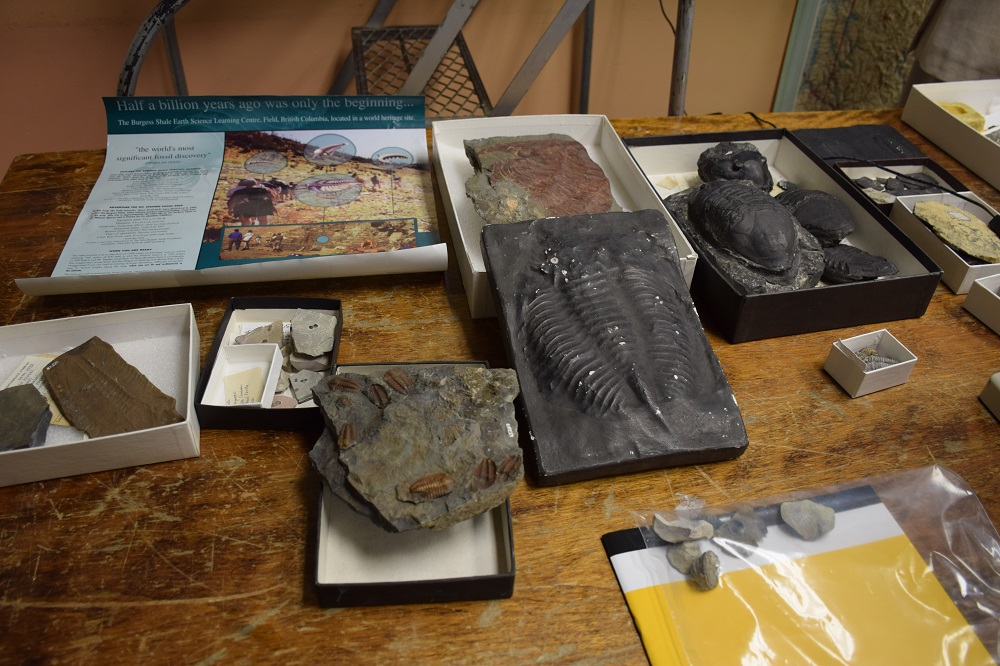


Students from Shady Side Academy Middle School studied our extensive fossil collection last week to learn about theories of climate, extinction, and evolution.
Albert Kollar, Section of Invertebrate Paleontology, used fossils from different periods of the Paleozoic era to show how trilobites changed and evolved over millions of years.
“Trilobites are popular with kids of any age and belong to a group of animals called arthropods
that include horseshoe crabs and insects,” said Mr. Kollar
The trilobites that the students touched and held come from the ancient rocks found today in the Czech Republic, France, Sweden, British Columbia, Missouri, New Mexico, New York, Utah, and Pennsylvania- the home of the 390 million year old state fossil of Pennsylvania.
Arriving at the Section of Invertebrate Paleontology lab, the students received a fossil coloring book to teach them about rocks and fossils in the Pittsburgh area. The class then split into smaller groups, each getting their own try at identifying rocks and fossils from Pennsylvania or making molds of different fossils from the collection with Plaster of Paris.
